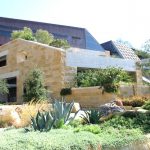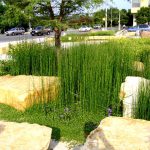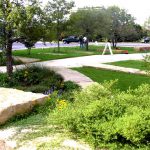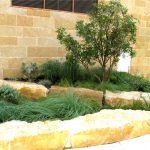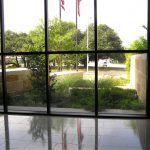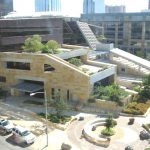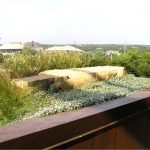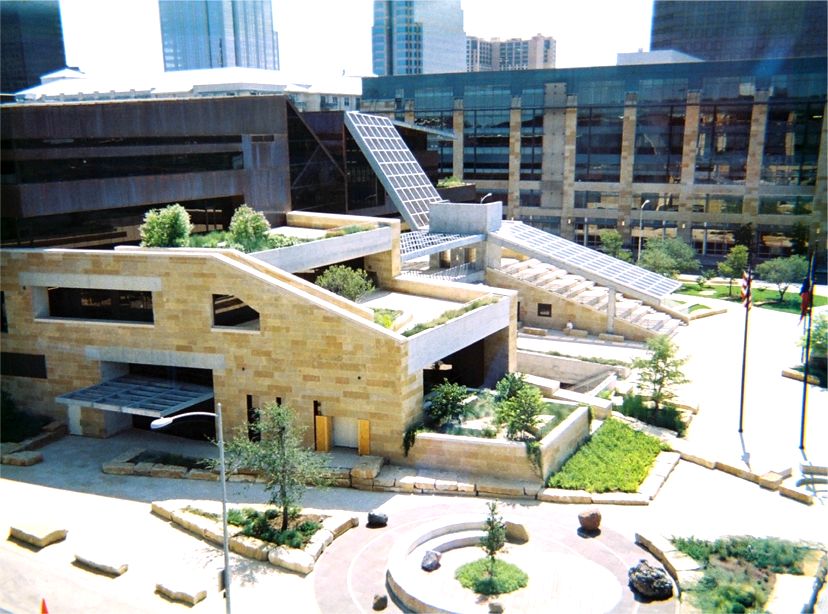
Additional Resources
Visit the City of Austin website, see the complete GRHC profile here, and read all about American Hydrotech in the Greenroof Directory here.
Regarding the Austin City Hall and Public Plaza greenroof, the City of Austin, Texas website says, “Joint venture partners, Eleanor McKinney and Carolyn Kelley, created a landscaping style that is uniquely Austin by integrating the plants and materials of its natural environment into the dynamic downtown area. The new City Hall features a plaza on top of the underground parking garage. Though it required special waterproofing and drainage layers to protect the building structure, the designers created an innovative garden for this area.”The garden includes a continuous, 5-foot-deep trench to nourish several large live oak trees. A lightweight rooftop landscape soil provides added volume for root growth to support the large trees. These trees will create a natural transition from the oaks on the Town Lake Hike-and-Bike Trail across the street. The plaza also incorporates rough-hewn Lueders limestone boulders to match the stone of the building. A zoysia grass area is in front of a stage designed for concerts.”The Austin City Hall won the Green Roofs for Healthy Cities Awards of Excellence in the Intensive Institutional category. The submission states, “The design process for the Austin City Hall and Public Plaza began on the banks of Bull Creek in northwestern Travis County, when Antoine Predock, Design Architect, sketched the exposed limestone bluffs of the Balcones Escarpment, as well as the waterfalls and creeks, and spreading live oaks and pasture on the lower plateau. McKinney Kelley Landscape Architects continued this theme by highlighting the diverse ecosystems of Travis County – the dry, rocky Edwards Plateau to the west and the deep clay Post Oak Savannah to the east. Lower lying areas of the building design symbolized the creek canyons while the upper roof terraces signified the drier plant palette of the rocky hillsides. Native plant associations were grouped together for water efficiency, extreme heat tolerance, and unique geographical constraints.
“Covering close to 12,000 sq. ft. at an approximate cost of $30 per sq. ft., the green roof of Austin City Hall used growing media in a proprietary blend based on the requirements of the supplied plants and project climate conditions and ranged from 30-60 inches in depth. The native plant palette responded to the different ecosystems in Travis County. The western side of the plaza and the upper roof terraces were highlighted by mountain laurel, agaves, yuccas, sotols, prickly pear, and feather grass with low ground cover of wooley stemodia and silver pony foot. The eastern side was dominated by yaupon holly, redbud, gulf muhly, and colorful prairie perennials such as bluebonnets, black-eyed susan and prairie coneflower. Bald cypress with horsetail fern, buttonbush, and inland sea oats reflected sunny creek settings, while dwarf palmettos and columbine revealed moist, shady overhangs.”
 Greenroofs.comConnecting the Planet + Living Architecture
Greenroofs.comConnecting the Planet + Living Architecture
